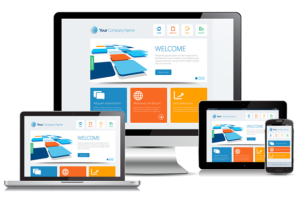Virtual Onboarding with Custom Websites:
Introduction
Onboarding new employees effectively is crucial for their success and the overall productivity of the organization. In the digital age, virtual onboarding has become a popular approach, offering flexibility and efficiency. This article explores how to virtually onboard new employees using a custom website, providing a comprehensive guide from planning to execution.
Table of Contents
Outline
- Understanding Virtual Onboarding
1.1 Definition and Importance
1.2 Benefits of Virtual Onboarding
1.3 Challenges and Solutions
- Planning Your Custom Onboarding Website
2.1 Identifying Objectives
2.2 Key Features to Include
2.3 User Experience Design
2.4 Content Strategy
- Building the Custom Onboarding Website
3.1 Choosing the Right Platform
3.2 Web Development Basics
3.3 Integrating Essential Tools
3.4 Testing and Launching the Website
- Essential Elements of a Virtual Onboarding Program
4.1 Welcome Messages
4.2 Company Culture and Values
4.3 Role-Specific Training
4.4 HR Policies and Procedures
4.5 Interactive Modules and Quizzes
- Enhancing Engagement During Onboarding
5.1 Virtual Team Introductions
5.2 Interactive Sessions and Webinars
5.3 Gamification Techniques
5.4 Feedback Mechanisms
- Monitoring and Evaluating the Onboarding Process
6.1 Setting KPIs and Metrics
6.2 Collecting and Analyzing Feedback
6.3 Continuous Improvement Strategies
- Case Studies and Success Stories
7.1 Example 1: Company A’s Success
7.2 Example 2: Company B’s Approach
- Expert Insights on Virtual Onboarding
8.1 Quotes from Industry Leaders
8.2 Best Practices from Experts
- Conclusion
9.1 Summary of Key Points
9.2 Future Trends in Virtual Onboarding
- FAQs
10.1 What is Virtual Onboarding?
10.2 Why Use a Custom Website for Onboarding?
10.3 How to Measure Onboarding Success?
Content Writing
- Understanding Virtual Onboarding
1.1 Definition and Importance

Virtual onboarding refers to integrating new employees into an organization through online platforms and tools. This approach has become increasingly important as remote work becomes more prevalent. Virtual onboarding ensures that new hires are equipped with the necessary information, resources, and support to succeed in their roles, regardless of their physical location.
1.2 Benefits of Virtual Onboarding
Virtual onboarding offers numerous benefits, including flexibility, cost-effectiveness, and scalability. It allows organizations to streamline their onboarding processes, provide consistent training materials, and accommodate employees in different geographic locations. Additionally, virtual onboarding can lead to higher employee satisfaction and retention rates.
1.3 Challenges and Solutions
While virtual onboarding has many advantages, it also presents challenges such as maintaining engagement, building relationships, and ensuring comprehensive training. Solutions to these challenges include using interactive content, facilitating regular virtual meetings, and providing ongoing support and feedback.
- Planning Your Custom Onboarding Website
2.1 Identifying Objectives
The first step in planning a custom onboarding website is identifying the objectives. These may include providing a seamless onboarding experience, ensuring compliance with company policies, and equipping new hires with the necessary knowledge and skills.
2.2 Key Features to Include
A successful onboarding website should include key features such as welcome messages, company information, training modules, and interactive elements. These features help to engage new employees and provide them with a comprehensive understanding of the organization.
2.3 User Experience Design
User experience (UX) design is critical for the success of an onboarding website. The site should be easy to navigate, visually appealing, and accessible on various devices. Good UX design ensures that new hires can easily find the information they need and complete their onboarding tasks efficiently.
2.4 Content Strategy
Developing a content strategy involves creating and organizing content that is informative, engaging, and relevant to new hires. This includes written materials, videos, quizzes, and other interactive elements. The content should be regularly updated to reflect changes in company policies and procedures.
- Building the Custom Onboarding Website
3.1 Choosing the Right Platform
Selecting the right platform for your onboarding website is crucial. Options include content management systems (CMS) like WordPress, custom-built websites, or specialized onboarding platforms. The choice depends on your organization’s needs, budget, and technical capabilities.
3.2 Web Development Basics
Building a custom onboarding website requires basic web development skills, including HTML, CSS, and JavaScript. If you lack these skills, consider hiring a professional web developer or using website builders that offer customizable templates.
3.3 Integrating Essential Tools
Integrate tools that enhance the onboarding experience, such as learning management systems (LMS), video conferencing software, and project management tools. These integrations facilitate interactive training sessions, real-time communication, and task management.
3.4 Testing and Launching the Website
Before launching the website, conduct thorough testing to identify and fix any issues. Testing should include checking for broken links, ensuring mobile compatibility, and verifying that all interactive elements function correctly. Once testing is complete, launch the website and monitor its performance to ensure a smooth onboarding experience.
- Essential Elements of a Virtual Onboarding Program
4.1 Welcome Messages
A warm welcome message sets a positive tone for the onboarding process. Personalized welcome messages from company leaders and team members can help new hires feel valued and excited to join the organization.
4.2 Company Culture and Values
Introducing new hires to the company culture and values is essential for aligning them with the organization’s mission and goals. This can be achieved through videos, articles, and interactive sessions that showcase the company’s history, achievements, and future aspirations.
4.3 Role-Specific Training
Providing role-specific training ensures that new hires have the necessary skills and knowledge to perform their job duties effectively. This training should include detailed instructions, practical exercises, and assessments to measure understanding.
4.4 HR Policies and Procedures
Clear and concise information about HR policies and procedures is crucial for new hires. This includes details on benefits, payroll, attendance, and other administrative matters. Providing this information in an easily accessible format helps to prevent confusion and ensures compliance.
4.5 Interactive Modules and Quizzes
Interactive modules and quizzes enhance engagement and reinforce learning. These tools can be used to test new hires’ knowledge, provide instant feedback, and track their progress throughout the onboarding process.
- Enhancing Engagement During Onboarding
5.1 Virtual Team Introductions
Facilitating virtual introductions between new hires and their team members helps to build relationships and foster a sense of belonging. This can be done through video calls, virtual coffee breaks, and team-building activities.
5.2 Interactive Sessions and Webinars
Interactive sessions and webinars provide opportunities for new hires to ask questions, engage with content, and connect with colleagues. These sessions can cover various topics, including company policies, role-specific training, and professional development.
5.3 Gamification Techniques
Gamification techniques, such as badges, leaderboards, and rewards, can increase motivation and engagement during the onboarding process. These techniques make learning fun and encourage new hires to complete their training.
5.4 Feedback Mechanisms
Collecting feedback from new hires is essential for improving the onboarding process. Feedback mechanisms, such as surveys and one-on-one meetings, allow new hires to share their experiences and suggest improvements.
- Monitoring and Evaluating the Onboarding Process
6.1 Setting KPIs and Metrics
Establishing key performance indicators (KPIs) and metrics helps to measure the effectiveness of the onboarding process. These may include completion rates, employee satisfaction scores, and time-to-productivity metrics.
6.2 Collecting and Analyzing Feedback
Regularly collecting and analyzing feedback from new hires provides valuable insights into the onboarding experience. This feedback helps pinpoint areas needing improvement and supports making decisions based on data.
6.3 Continuous Improvement Strategies
Continuous improvement strategies involve regularly reviewing and updating the onboarding process based on feedback and performance data. This ensures that the process remains relevant and effective in meeting the needs of new hires.
- Case Studies and Success Stories
7.1 Example 1: Company A’s Success
Company A implemented a virtual onboarding program that significantly improved new hire engagement and retention. This case study explores the strategies and tools used by Company A and the results achieved.
7.2 Example 2: Company B’s Approach
Company B adopted a custom onboarding website that streamlined the onboarding process and reduced administrative workload. This case study highlights the key features of the website and the benefits experienced by the organization.
- Expert Insights on Virtual Onboarding
8.1 Quotes from Industry Leaders
Industry leaders share their insights on the importance of virtual onboarding and best practices for success. These quotes provide valuable perspectives and tips for implementing an effective onboarding program.
8.2 Best Practices from Experts
Experts in HR and organizational development offer best practices for virtual onboarding, including tips on engagement, training, and feedback. These best practices can help organizations to optimize their onboarding processes.
- Conclusion
9.1 Summary of Key Points
In conclusion, virtual onboarding with a custom website offers numerous benefits, including flexibility, efficiency, and scalability. By carefully planning and executing the onboarding process, organizations can ensure a positive and productive experience for new hires.
9.2 Future Trends in Virtual Onboarding
Future trends in virtual onboarding include the increased use of artificial intelligence, augmented reality, and personalized learning experiences. Staying ahead of these trends can help organizations to continually improve their onboarding processes.
- FAQs
10.1 What is Virtual Onboarding?
Virtual onboarding is integrating new employees into an organization using online platforms and tools. It involves providing new hires with the necessary information, resources, and support to succeed in their roles remotely.
10.2 Why Use a Custom Website for Onboarding?
A custom onboarding website offers a centralized platform for delivering training materials, company information, and interactive content. It provides a consistent and engaging onboarding experience for new hires, regardless of their location.
10.3 How to Measure Onboarding Success?
Onboarding success can be measured using key performance indicators (KPIs) and metrics such as completion rates, employee satisfaction scores, and time-to-productivity. Regular feedback from new hires also provides valuable insights for continuous improvement.
#Virtual Onboarding with Custom Websites:,#Virtual Onboarding with Custom Websites:,#Virtual Onboarding with Custom Websites:,#Virtual Onboarding with Custom Websites:,#Virtual Onboarding with Custom Websites:,#Virtual Onboarding with Custom Websites:,#Virtual Onboarding with Custom Websites:,#Virtual Onboarding with Custom Websites:,#Virtual Onboarding with Custom Websites:,
#Virtual Onboarding with Custom Websites:,#Virtual Onboarding with Custom Websites:,#Virtual Onboarding with Custom Websites:,#Virtual Onboarding with Custom Websites:,#Virtual Onboarding with Custom Websites:,#Virtual Onboarding with Custom Websites:,#Virtual Onboarding with Custom Websites:,#Virtual Onboarding with Custom Websites:,#Virtual Onboarding with Custom Websites:,
#Virtual Onboarding with Custom Websites:,#Virtual Onboarding with Custom Websites:,#Virtual Onboarding with Custom Websites:,#Virtual Onboarding with Custom Websites:,#Virtual Onboarding with Custom Websites:,#Virtual Onboarding with Custom Websites:,#Virtual Onboarding with Custom Websites:,#Virtual Onboarding with Custom Websites:,#Virtual Onboarding with Custom Websites:,
#Virtual Onboarding with Custom Websites:,#Virtual Onboarding with Custom Websites:,#Virtual Onboarding with Custom Websites:,#Virtual Onboarding with Custom Websites:,#Virtual Onboarding with Custom Websites:,#Virtual Onboarding with Custom Websites:,#Virtual Onboarding with Custom Websites:,#Virtual Onboarding with Custom Websites:,#Virtual Onboarding with Custom Websites:,
#Virtual Onboarding with Custom Websites:,#Virtual Onboarding with Custom Websites:,#Virtual Onboarding with Custom Websites:,#Virtual Onboarding with Custom Websites:,#Virtual Onboarding with Custom Websites:,#Virtual Onboarding with Custom Websites:,#Virtual Onboarding with Custom Websites:,#Virtual Onboarding with Custom Websites:,#Virtual Onboarding with Custom Websites:,









